#yoni consorts
Explore tagged Tumblr posts
Text
Yoni animal observations
I did something similar with nakshatras. This is them in a very simple way. This is based on traditional associations as well as my own observations of real life and art. 💕 The word "yoni", as well as meaning the female reproductive organ, also means "origin". Yoni animal represents the instinct of the nakshatra and ultimately, reveals its true core nature.
Also, disclaimer: it's very sad that I have to say this, and apologies if you're not one of those people, but if you're going to correct anything in this post by writing one or more long paragraphs of why you think I'm wrong, you might as well just start your own blog or make your own post about the subject. I've been observing yoni animals for years and I'm kind of sorry if any of this offends you, but I'm not trying to attack anyone personally, or even a specific placement (nakshatras in this case), cause that's just dumb. Of course, everyone is free to express their opinions but please do it politely and have some respect for the person who took their time to gain and share knowledge. It's very easy to correct others, it's very hard to be faultless yourself. So, factual corrections are always welcome(say someone got someone's chart placement wrong, or they have written a factually incorrect association, like if they were to write that Jyeshta is fierce as opposed to sharp/cruel in nature.), but, once again, everyone's view is different and so either respect mine or don't write anything at all.
With that being said, you can now enjoy this post💕
Horse yonis
Ashwini and Shatabhisha
Keywords: activity, simplicity, masculinity(solar/yang), independence, healing.
Straightforward people. They might tend to have black and white thinking, can be very blunt with their delivery and definitely prone to "deafness": not hearing others' views. Simple and utilitarian, goal-oriented. Their presence might not be really noticed until the moment they suddenly speak up about or act on something. Love to point stuff out. Either quiet or very precise while speaking. Not aggressive but can be combative. Most likely will oppose someone before making peace. Independence>sharing. Don't like anything "unnecessary", love to get to the point.
Elephant yonis
Bharani and Revati
Keywords: slow, authority, time, timelessness, strength, transitions, protection, completion, gentleness, complexity, depth.
Not revealing their innermost selves, only revealing it to a select group of people, if to anyone. They attach meaning to things based on their experiences. Protective and gentle with each other, closed off to most of the others. Very private. Not really concerned with trends. Observant but not quick to act. Can have many sides to them that some others might fail to understand. Have an air of wisdom, but not that of arrogance. Still, they are the most likely to knowingly take the high road but still protect their peace, making them very exclusive, although it's never for show. Defensive but quietly so. Accomodating to some degree on the outside, there's always more to them than what's obvious. See the bigger picture in every situation. They have a certain quiet strength and power. Nurture is important to them. Do not appreciate unnecessary aggression and try to dominate over anything they consider harsh/crude.
Sheep yonis
Krittika and Pushya
Keywords: precision, structure, minimalism, choosiness, contained.
Do not like excess in anything. They have a sense of balance, usually in almost everything. Prioritize sctructure and basics/essentials. Like clarity and clear-cut lines in their lives and around them. Can be snappy, but in a passive-aggressive way. Not harsh in a heavy/overwhelming way but still harsh about details. Have a soft demeanor with strangers and acquaintances, sometimes even people close to them in everyday life but can judge them quietly. Neutral to friendly on the outside, but if they have uncomfortable emotions they try hard to release them quietly/without much fuss. Might bottle up resentment in result. Very utilitarian and practical.
Snake yonis
Rohini and Mrigashira
Keywords: enjoyment, ease, materialism, basic awareness, growth, progress, sensory indulgence, instincts.
Very placid and calm. They focus mainly on material things but can live without luxuries, and can also share them, although privacy is very important to them. Very aware of their surroundings and their own presence. Attuned to their senses. Can get easily attached to people and things. Can exhibit selfish tendencies(or that's how it looks to others) when they feel like their desires are ignored, but Rohini and Mrigashira each do it differently.
Dog yonis
Ardra and Mula
Keywords: upheaval, critical point, rebelling, release, change, anchoring.
Tense but not frail. Might look tortured sometimes. Do not like to and probably even cannot focus on details, at least not how it's traditionally done(different to each situation). Like to display their individuality in one way or another. Dark humor or sassy comebacks. Either quiet or very loud, but either way, opinionated. If they're neutral then they're opinionated about being neutral. Can be kind of nihilistic but at peace with it. Contrarian and unapologetic. If they don't care about something you can't make them care. If they do care, they care intensely.
Cat yonis
Punarvasu and Ashlesha
Keywords: accumulation, buildup, purity, safety, protection, preservation, cycles.
Concerned with what influences them, not so much what they put out. Self-focused but also highly aware of others' needs. Can adapt to surroundings and can change their behavior based on what they need or really want. Not unkind but laser-focused on the boundaries. Always keep their cards close to their chest, not out of malice but simply to preserve their safety. Look more unnaproachable than they really are, and know more than they share with most.
Rat yonis
Magha and Purva Phalguni
Keywords: dispersion, creativity, planting seeds, the self.
Can be egocentric. Prideful and nonchalant. Love to show off. Might be aware of surroundings to some degree but even if they are, they rarely care. Getting what they want is the priority, along with self-expression. Not very moralistic, don't care much about labels. Sometimes they can be too detached. Will almost never catch them crying in front of others, although they can be dramatic if they want and can, without a problem, attract their dwsired attention. Their happiness is more warm and generous than loud and euphoric. Might have a poker face, they rarely show strong emotions. The strongest emotion I've seen them express is that of defensiveness, and that's not even an emotion. When they get defensive it's almost always because something has touched their pride or triggered their ego. Focused on what they can do.
Cow yonis
Uttara Phalguni and Uttara Bhadrapada
Keywords: stability, the long-term results, natural, softness, power/influence, unity, calm.
Stubborn. That's the only defense they have, because otherwise they're very soft. Naturally honest. They have an effortlessness about them that feels easy to be around, and they are pleasant to be around but not accepting of everyone. They avoid people they don't like from early on and stick to the ones they consider better. Not hesitant to defend themselves or people close to them, but not quick to waste that energy on just anyone, and when they do become defensive they still maintain "the high ground". Backing their allies and fighting proudly is natural for them. Again, very stubborn, so they rarely, if ever, give up on something important. Although they're tough, they're not sharp or cruel. They are mostly in a state calmness and assuredness rather than anxious defensiveness. Very fixed and comfortable in their ways.
Buffalo yonis
Hasta and Swati
Keywords: materialism, gain, comfort, strength, feminine(yin), ease.
More attached to material things than other yonis. Individuality is defined through connections and surroundings. Love comfort and ease. Interdependence>independence. Can be curiously neutral and accomodating. Self-focused but not selfish. Often phlegmatic and slow. Genuinely caring but can be cunning. Not the most direct people. They will let others know their views but won't push them aggressively on others. Almost everything about them is filtered through that neutrality.
Tiger yonis
Chitra and Vishakha
Keywords: building, gradual, defensive, expression, buildup.
The most defensive. Can look sweet on the outside but are not all soft. Can range from extremely forgiving to extremely vengeful. Aggression comes out while speaking. Rarely, if ever, present in a state of calm melancholy. They moreso go from happy/fun to agitated. Focused on development/building, and always look for more than what's natural for them. Witty but emotionally so. If they're highly agitated, it's very hard for them to exercise restraint in the moment. Not that direct in general but unfiltered during critical moments. It's easy for them to put on a mask, whether out of neccessity or just for fun. Can be very judgemental. If they're not aware, it can make them act in a "mean" way when they feel not their best.
Rabbit/Deer yonis
Anuradha and Jyeshta
Keywords: society, organization, status quo, responsibility, transpersonal, maturing.
Very non-aggressive on the inside, despite how they might look. Naturally have endurance and a sense of responsibility. Can be judgemental but also understanding. Love to give advice. Competitive but respectful. Can become arrogant. Love everything "classic" but want to establish their own, new structures. Choosy and sometimes exclusive. More warm than they appear, and capable of more emotions than how it seems. Often traditionally intelligent. Have a very civilized behavior.
Vanar yonis
Purva Ashadha and Shravana
Keywords: flow, alliances, connections, support, creation and preservation.
Good at reading between the lines, anything too structured is harsh for them. Otherworldly aura/mannerisms. Most likely to posses what others might consider as "quirks". Value their own individuality and uniqueness. Seeks to be different from what they consider boring, normal or basic. Not very reactive. When they get defensive, they get quiet. Can romatisize sadness and melancholy. Capable of seeing both sides but are often willingly biased.
Mongoose yoni
Uttara Ashadha
Keywords: independence, solitude, practicality, victory.
Truly neutral and unbothered. Value honesty and integrity. Not attached to material things at all. Easy to be around but their regal nature might put some people ill at ease. Naturally take on leadership positions. Might feel lonely but won't trade solitude for tiring/uninteresting company. Value practicality and simplicity, and are practical themselves. Surprsingly warm and feeling in certain moments, but can also be uncaring towards others.
Lion yonis
Dhanishta and Purva Bhadrapada
Keywords: notoriety, flashiness, power, aggression, pride.
Very unfiltered and loudly so. Unashamed and bold, proud. That pride and confidence fuels their calmness, but they can lack patience. In everyday interactions they can look very unreactive but if something "triggers" them, they will not hesitate to be a little(or not so little) aggressive. Love to spread their influence. Might strongly dislike anything that looks subtle and quiet to them, as it arises distrust in them. Rarely, if ever, use/appreciate sarcasm. They prefer directness. Can slip into being a bully, or can become a proud voice for others.
#vedic astrology#astrology#nakshatras#astrology observations#sidereal astrology#astro notes#astrology tumblr#yoni animals#yoni consorts#yoni#horse yoni#elephant yoni#sheep yoni#snake yoni#dog yoni#cat yoni#rat yoni#cow yoni#buffalo yoni#tiger yoni#rabbit yoni#vanar yoni#mongoose yoni#lion yoni#vedic astrology observations#astrology observation
771 notes
·
View notes
Text
entire time watching bihter ziyagil's face card, all i could think of was selena gomez. trine nakshatras doing it again for me.






Mula Moon Beren Saat & Ashwini Moon Selena Gomez.
#vedic astrology#astrology#sidereal astrology#ketu#mula#ashwini#rahu#sagittarius#aries#both were embarrassingly desperate for some lame ass rahu man (who were also their yoni consorts). it pisses me tf off
116 notes
·
View notes
Text
I think we often relate to the nakshatra of our yoni consort, especially the one for our Moon, as it represents our core emotions.
19 notes
·
View notes
Text
A Basic Guide to Vedic Astrology
I think many of you are new to Vedic astrology, so I thought I'd give a little intro to some of the concepts, terminology etc
First and foremost, Vedic astrology dates back to 5000 BC - 10,000BC, which means it only takes into account Sun, Moon, Mercury, Venus, Mars, Jupiter, Saturn and the 2 nodes of the Moon, Rahu & Ketu along with your Ascendant. Outer planets like Uranus, Neptune, Pluto along with asteroids are NOT calculated as most of them were discovered only in the last 2-3 centuries.
A conjunction takes place when two planets are placed in the same nakshatra within 5 degrees of each other. Even if they are placed more than 5 degrees apart, so long as they are in the same nakshatra, they can to some extent be considered as conjunct (the effect will be less potent than an exact conjunction basically) BUT if you have Sun in Ashwini and Venus in Bharani, you DO NOT have Sun conjunct Venus in Aries, that is NOT how it works. Those two nakshatras have entirely different themes, mythologies, purposes, deities, planetary influences and lessons, how on earth can they be considered "conjunct"???
That said, wherever you have a conjunction in your chart will have a major influence on you. It is a very potent energy. Dont ask me if having Saturn conjunct Ketu in Ashwini makes you a Saturnian or a Ketuvian because that's not the point, its that those two planets have a specific relationship with each other in your context and to understand the functioning of one, you must look at the other (along with its placement, aspects etc etc)
There are 12 rashis, corresponding to zodiac signs and each rashi is divided into 2 or more lunar mansions called "nakshatras". If you've wondered why say Arieses all act so different, its because they're either UBPs or Revatis in their Vedic chart, contributing to vastly different personalities.
In Vedic astrology, we have the concept of 7 charakarakas all of which indicate a different purpose:
Atmakaraka aka the soul indicator. it is the planet at the highest degree and represents your soul/being. its your compass and points towards the calling of your soul
2. Amatyakaraka, it typically points to your career/profession and works alongside your atmakaraka. it is the planet at the second highest degree
3. Bhratrukaraka (planet at 3rd highest degree) points to relationships with siblings
4. Matrukaraka ( planet at fourth-highest degree in your chart) signifies your relationship with your mother or maternal figures. It represents the nurturing qualities within you and helps illuminate your connection to your mother or motherly figures in your life.
5. Putrakaraka (planet with the fifth-highest degree in your chart) reveals your approach to parenting and your potential for creativity. It provides insights into your connection with your children and your capacity for artistic expression.
6. Gnatikaraka (the planet with the sixth-highest degree in your chart) indicates obstacles and adversaries in your life. It reflects your ability to overcome challenges and confrontations, making it a valuable guide for navigating life’s hurdles.
7. Darakaraka (the planet at the lowest degree) it is associated with your spouse and romantic relationships. It uncovers the qualities you seek in a partner and offers insights into how you relate to your significant other. Understanding the Darakaraka can provide clarity on your love life and partnerships.
HOW TO STUDY NAKSHATRAS:
Read about the mythology behind your nakshatras. This helps shed light on its nature.
Look at your nakshatra's yoni consort. Read about what the yoni animal symbolically represents
Similarly, read about your nakshatra's deity, ruling planet, other naks under the same planetary influence etc
There are 4 purusharthas (aka motivations) in vedic astrology according to which nakshatras are classified. understanding the different classifications behind each nak helps us understand its nature better
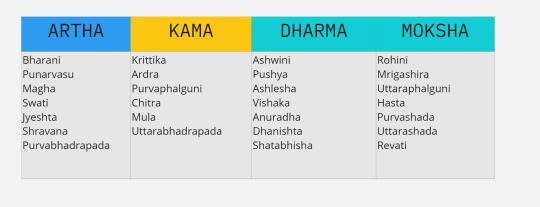
similarly naks can also be classified by their ganas which describe the nature of these naks:
Deva = godly, Manushya = humane, Rakshasa = demonic
if you have a rakshasa gana nak, it does not mean you're a demon. it just points towards traits like selfishness, lack of generosity etc AND the person you are is sum of your whole chart, not just the gana of one nak, so don't beat yourself up

Naks are also classified on the basis of their qualities of which there are 7
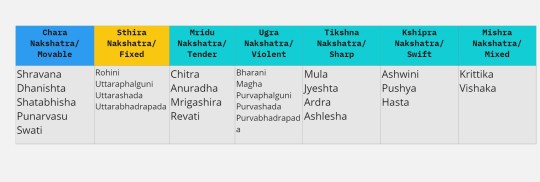
they can also be classified on the basis of caste:

(all tables, pyramid etc by me so any mistake is mine oopsies)
4. Chart Ruler
The ruling planet of your ascendant sign is your lagna lord. If you're Mrigashira Rising, then your lagna lord is Mercury/Venus (based on whether your nak falls into the Taurus portion or the Gemini portion).
5. Navamsa or D9 chart
Look at your D9 after you've studied your D1 otherwise it'll feel like too much info you don't fully understand. Navamsa is consulted along with your D1/Birth chart. you can think of it as D1 promises certain things and D9 is if/how those things materialise. its like part 1 and part 2 of a story
I can't think of anything else that should be covered🤡but if you have doubts you can ask!!
I hope this was helpful!!
#astrology notes#astrology observations#sidereal astrology#vedic astro notes#nakshatras#astrology#vedic astrology#astro notes#astro observations#astroblr#jyotish
787 notes
·
View notes
Text
Sun Darakaraka: The Powerful Spouse

Jennie Kim's darakaraka sun lies in uttara ashadha (capricorn). (Her birth time is unknown, but most likely the sun is her DK which is at 1°26’.)
Sun DK can infer a couple things about the spouse/partner:
They will most likely be in a very high and respectable position in their career field.
Commands attention when they enter a room; could be very popular and naturally shines in whatever they choose to do in life.
Masculine qualities: They are go getters and actively pursue their ambitions.
On the negative side: Could be egotistical and stubborn; self-centered.



If we take a look at Jennie's dating history (2 of which are rumors but I will include them anyways), we can come to understand that her past relationships definitely involved people with the qualities listed above. She attracts/is attracted to the men in kpop which we can say come from internationally famous groups. Even within their respective groups, these men are recognized on a large scale.
Uttara ashadha as DK nakshatra:
The "latter invincible one" is known to conquer hardships of any scale they come across. These people are able to persevere despite pressure, and come out as victorious.
Mongoose yoni: Sometimes these people can face compatibility issues with partners since there is no yoni consort.
They come across as very charming and suave. Many people are often attracted to the natural energies these people emit, seemingly without effort. (UA's lord is the sun)
EXO's Kai (Jennie's only confirmed relationship) has uttara ashadha sun, mercury and venus.
☆ミ
#vedic astrology#sidereal astrology#darakaraka#sun darakaraka#sun dk#jennie kim#blackpink#uttara ashadha
192 notes
·
View notes
Text
Speculating nakshatras: film observation
I theorize that Isabella Merced might have an Anuradha ascendant rather than Vishaka. Her C-rated birth time places her tropical Scorpio ascendant at 14 degrees, which corresponds to a Vishaka ♎︎ ascendant in Vedic astrology. However, in some of the roles she’s portrayed, I’ve noticed themes that align with Anuradha, which could suggest a potential Anuradha ascendant.

Isabella was cast alongside Anuradha natives Dakota Johnson, Sydney Sweeney, and Celeste O’Connor as the main characters. In the storyline, Dakota Johnson’s character is tasked with protecting the girls, as her prophetic visions show them being killed and attacked by a man who fears they will gain powers as the next Spider-Women, which would lead to his demise. Claire Nakti has mentioned Anuradha’s connection to spiders, and another example is Anuradha native Scarlett Johansson portraying Black Widow in the Marvel universe.

Most recently, Isabella portrayed Kay in Alien: Romulus (spoilers). In the film, her character, pregnant at the time, is severely injured by an alien. She injects black goo into her body, hoping it will help her injuries, but it accelerates her pregnancy, leading her to give birth to an alien hybrid. This theme resonates with Anuradha, which often female natives of this nakshatra portray characters giving birth to beings that are tied to greater evil or abominations. I’ve discussed this idea on my old Twitter account (v1rginldy), and @multidimensionalguidance elaborates on it further in their posts. *Sidenote the father of her baby in the film is portrayed by yoni consort Jyestha native Spike Fearn and her brother portrayed by Archie Renaux who has Anuradha ☉.




While I don’t think Isabella strongly resembles many Anuradha natives or exhibits many Anuradha features, I do see slight resemblances in her eyes and pout to Anuradha natives like Janina Gavankar and Chanel Iman. She also has doe eyes which is physical trait amongst the deer yoni nakshatras.
Edit*

I’ve come across pictures of Isabella where she resembles Anuradha ☉ native Britney Spears.

Someone had pointed out, and I’ve observed as well, that Isabella resembles Vanessa Hudgens, who has a Jyestha ☉ (Anuradha Yoni consort). Isabella, on the other hand, has Jyestha Mars. If Isabella has a Scorpio ascendant in Anuradha, her Jyestha Mars would be in the 1st house, influencing her appearance. Currently, her Jyestha Mars is in the 2nd house with a ♎︎ ascendant, which can also affect her facial features, as the 2nd house rules the face. Additionally, Vanessa and Isabella share Aquarius☽, with Vanessa’s being in Shatabhisha and Isabella’s in Purva Bhadrapada.
This is just a theory and personal speculation. Isabella could very well have a Vishaka ascendant, and there may be other astrological explanations for this, but these are my observations and opinions.
#vedic astrology#anuradha nakshatra#sidereal scorpio#astrology observations#vishaka nakshatra#sidereal libra
107 notes
·
View notes
Text
Saturn nakshatras, especially anuradha, have a tendency to be codependent and form close one-on-one relationships.
They value consistency and stability so this is usually a platonic best friend for two main reasons
a) It’s more likely to be an older connection that they established as children. They aren’t as attracted to the “excitement” of a new romantic relationship and would rather stay with what they know
b) They’re naturally closed off and reserved so they may be uncomfortable with the physical and/or emotional expectations a romantic partner might have for them (sun nakshatras feel similarly about relationships but for different reasons). They can sometimes outgrow this as adults though
Anuradha’s god Mitra is also associated closely with friendship.
Both Pushya and Anuradha can be very giving and devotional in nature- Pushya being “nourishing” and Anuradha being associated with Radha, a goddess of loving devotion who became so close with the god Krishna that they are basically considered one (Radha-Krishna)
However by completing devoting themselves to others/society, they can often personally stagnate.
(What specifically they might devote themselves to by nakshatra:
Pushya -> spirituality, charity work,
Anuradha -> companionship,
UBP-> controlling or strongly influencing their interpersonal relationships through leadership positions, eg. as a boss described in Claire Nakti’s UBP video, or as a cult authority like Crowley (UBP native)
Please note that the themes I’ve associated with the 3 Saturn nakshatras are a generalisation based on their themes and not to be taken as definitive. Someone’s personal priorities will likely be visible in their whole chart.
For example Claire Nakti uses Miranda Priestly (Meryl Streep, a Pushya native) as an example of a tyrant Saturnian boss character, but she also has moon in the 10th house, making her career a major area of life for her.)
It’s common for Saturn nakshatras to go to extremes and give up everything for a certain ideal, but in order to grow into the Mercury nakshatra stage, they have to move on.
(Ashlesha -> shedding of unwanted personal attachments
Jyestha -> the eldest, ruled by Indra King of the Gods
Revati -> I’m not entire sure how to articulate this yet actually. UBP nakshatra is a rather intense energy being associated with black magic and such, so I like to think of Revati as a development into a more carefree state of being. If you can word it better please share)
I think the transition from Anuradha to Jyestha specifically makes me think of this song by the Buttress
For those who don’t feel like listening, its basically reimagining the story of Julius Caesar’s assassination as a woman (Brutus) who resents a man close to her (Caesar) for being successful whilst she is just the “muse” who provides him companionship. This eventually leads to Brutus betraying Caesar and choosing themselves
“Or am I just wishing I could be like you?
that the people would see me too as a poet
And not just the muse”
This is just one lyric that demonstrates this but I recommend listening to the full song to fully understand the vibe.
Jyestha is also Anuradha’s yoni consort.
I don’t have any birth info at all for the Buttress but this song is sooo Anuradha-Jyestha coded to me.
The most mainstream example of this dynamic I can think of is Maddy (Jyestha sun) and Cassie (Anuradha ascendant) from Euphoria.

“Maddy knew who she was from a very early age. For as long as Maddy could remember, everybody loved her. She never knew exactly what it was. She just knew that she had something special. Something intangible. Something immeasurable. And she had that fucking confidence”
-quote from the show that I copy and pasted off of the wiki
Cassie resents her best friend for exhibiting these qualities and wants them for herself. She too wants to be powerful and charismatic (Jyestha stage) instead of just sitting on the sidelines as Maddy’s best friend (Anuradha stage). She betrays Maddy in the process but does not earn respect from anyone due to her codependent nature.
I don’t really care for Euphoria and there are a lot of in depth existing astrology analysis on these two so I won’t elaborate further. Just a popular example
#vedic astrology#anuradha#anuradha nakshatra#saturn nakshatra#pushya#uttara bhadrapada#mercury nakshatra#jyestha#ashlesha#revati#uttarabhadrapada#sidereal astrology#Spotify
104 notes
·
View notes
Text
Bharani : the birth of Venus.
Part 1
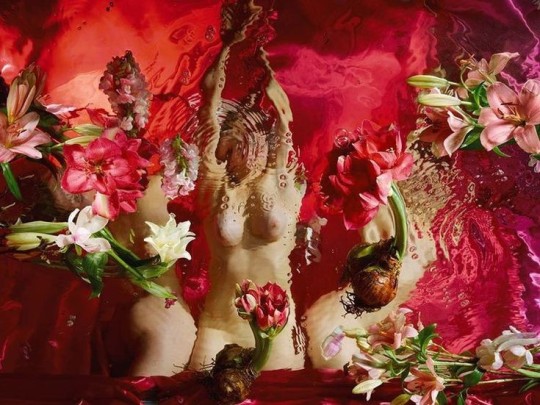
Let's talk about ancient godesses of love and Bharani nakshatra.
I will base my research on the legend of the dead and resurrected god present in many religious myths coming from the middle east (ps : i'm sorry in advance for the grammar, syntax or spelling mistakes that you may find in this post, english is not my first language)
Bharani, situated in the heart of the rashi of aries is governed by Shukr: Venus but also by Yami and Yama in vedic mythology who are twins and gods respectfully of life and death.

Yama, the main deity of Bharani is said to be one of "8 celestial gatekeepers, who guards eight directional doorways or exits through which souls travel from an earthly plane to other planes of existence" making him the lord of Dharma since at one's death, he decides basing on his actions in what plane should one reincarnate.
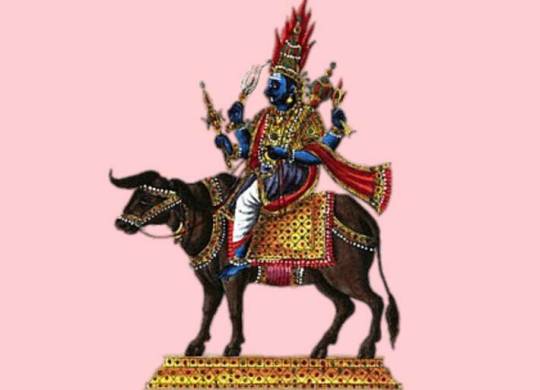
Since Yama is responsible for directing the flow of life on Earth the association between bharani and the yoni becomes evident: the female reproducting system serves as a portal for souls to take on a physical form. So bharani as Claire Nakti perfectly described it relates to the feminine ability to receive, hold, nurture and ultimately transform through the womb.
Because Bharani aligns itself with all the feminine qualities by excellence it makes sense as to why Venus is it's ruler.
Venus is the roman name for the goddess Aphrodite: in greek mythology. She is said to be the goddess of love and beauty at large but also the goddess of war and sexuality. First because the ancient greeks saw the duality that links love to war and how they seem to come together through sex.
Also, Aphrodite is said to be born from the sperm of Ouranos when his testicules got cut by his son Saturn as he was always feconding Gaia, the Earth and causing her distress: he was acting cruel regarding their children. The sperm of Ouranus got mixed up with the foam of the Ocean creating Aphrodite which means "risen from the foam". So it was interesting to see that as Shukr also means sperm in sanskrit and it shows the origin of Venus as a fertility goddess too.

This conception of Aphrodite directly links her to ancient goddesses of love such as Ishtar or Inana in Mesopotamian/summerian mythology or Isis in egyptian mythology. Most of the time, these goddesses are the female counterpart of a god that was once mortal, got cursed, died and then came back to life for them to form an immortal couple.
In the case of Ishtar, her consort is Dumuzi or Tammuz and Osiris is the consort of Isis.
In Mesopotamian mythology :
Ishtar or Inana in sumerian is the goddess of love and sexuality, beauty, fertility as well as war because of her status as a " bloody goddess" mostly refering to her character in plenty of myths.
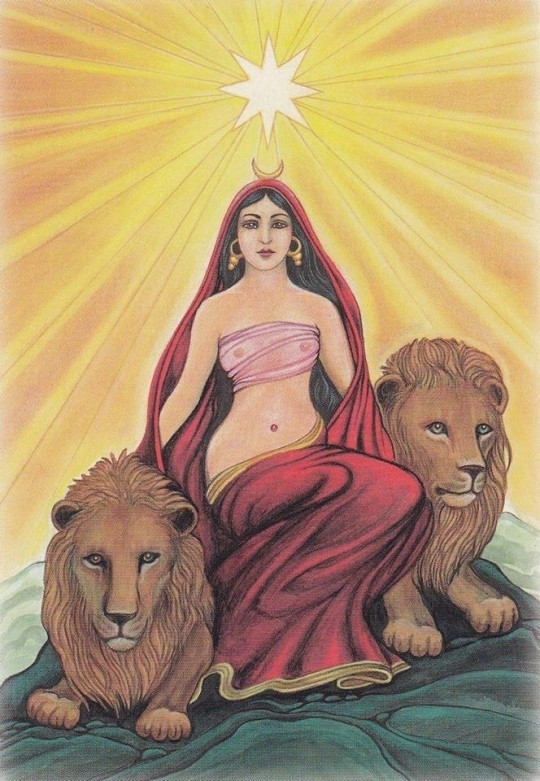
For example: in one story, she became infatuated with the king Gilgamesh, but the latter knowing her fierce reputation, refused her advances. As a result she got furious and unleashed the celestial Bull on Earth which resulted in 7 years of plagues. This celestial bull was later defeated by Gilgamesh and Endiku, and its corpse was throwed in front of Inana. Blinded by rage, she decided that as a punition Enkidu must die and sad at the death of his bestfriend Gilgamesh began his journey to find a cure to Death.
Bharani is a fierce or Ugra nakshatra meaning that its nature is agressive, bold and assertive in pursuing their goals. They are ruthless in the process of accompling what they desire the most and are inclined to extreme mood swings that can result in them to be "blinded" by their extreme emotions perfectly expressing the passionate character of Venus and her other equivalents in differents pantheons of antiquity.
Inana/ Ishtar's story with Dumuzi/Tammur begins as she was convinced to chose him by her brother Utu. Then she got married with the shepphard Dumuzi instead of whom she prefered the farmer: Enkinmdou. During the courtship, Inana prefered the fine textile of the farmer and his beer rather than the thick wool and milk of Dumuzi. The preference for the shepphard illustrates that at the time the Mesopotamian civilisation was known for their proliferent agriculture with the egyptians in the region, so this myth encapsulate the opposition between nomads and sendatary people at this specifific time period.

By the way, another symbol of Bharani is the cave and traditionnaly, the cave was used as a storage room for food. Also Bharani's purpose is Artha so these individuals are motivated to accumalate resources and provide safety and security, so Bharani can be linked to the exploitation of natural ressources like the soil illustrating the preference of Ishtar for the farmer. This is reinforced also by its Earth element.
So coming back to the myth, in a mesopotamian text called Inana's Descent to the Underworld, the goddess goes to Kur (hell) with the intent of conquering it, and her sister Ereshkigal who rules the Underworld, kills her. She learns that she can escape if she finds a sacrifice to replace her, in her search, she encounters servants who were mourning her death however she finds Dumuzi relaxing on a throne being entertained by enslaved girls. Enraged by his disloyalty she selects him as a sacrifice and he is dragged to the Underworld by demons.
He is eventually resurrected by Inana and they become an "immortal couple" as he may only come back to life for half of the year, being replaced by his son (?) who is also his reincarnation for the other half of the same years, so describing the cycle of regeneration of life.
Other mythologycal stories of goddesses in the near east describe a similar patterns:
The goddess Asherah is described as being the mother and the lover of her son Adonis.
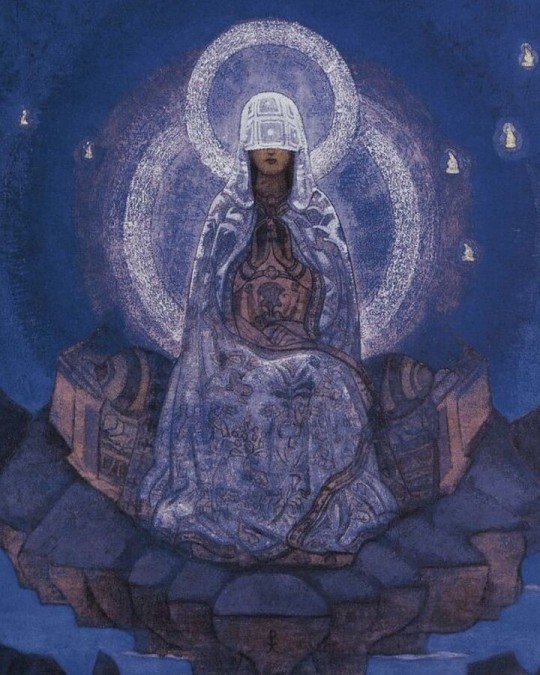
The goddess Cybele in the phrygian pantheon takes the form of an old woman as she described as the mother of everything and of all. And at the same time she is the consort of Attis who his her own son (wtf ?)
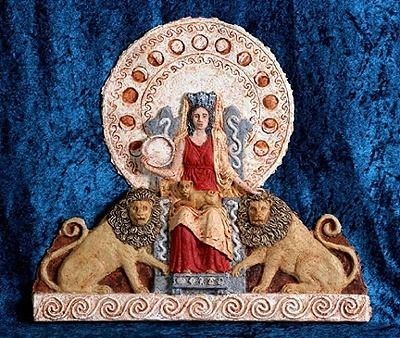
Also, Yama and Yami are implicated in a incestuous entanglement where his sister Yama wanted to lay with him however he refused establishing himself as a god with an infaillible moral campus.
All of these representations illustrate the relation between the masculine and the feminine, life and regenration which are all topics related to Bharani nakshatra. Women by their capacity to give life are seen as the source of life and therefore are eternal as they are able to regenarate themselves through daughters which are identical to them whereas man who is unable to reproduce by himself, is therefore mortal feels the need to associate with her to resurrect through a son who is identical to him. Bharani exiting as the embodiment of the link between "the father and the offspring" which is the feminine vessel.

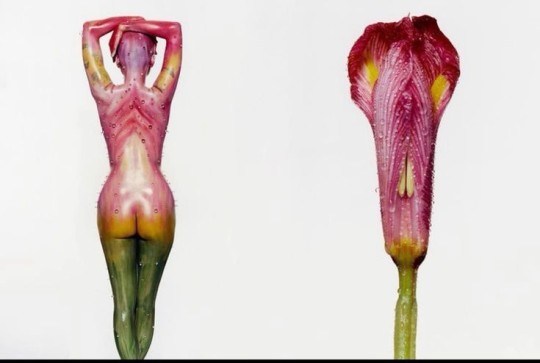
So this is certainly part 1, I think that these ancient myths are where Claire Nakti found her inspiration for her series on Bharani.
#vedic astrology#cinema#coquette#astrology#vintage movies#aesthetic#coquette dollete#fashion#vintage#movies#greek mythology#roman mythology#ancient egypt#bharani#chitra nakshatra#purva bhadrapada#purva phalguni#cowboy carter#venus#adonis
240 notes
·
View notes
Text
Yoni Consorts - Match for Karma, not for Life

It is a myth that yoni consorts are a perfect match and result in lifelong, satisfactory arrangements. Yoni is actually volatile, and it reflects the sexual instinctive nature of humans, that feels like the goal is fulfilled the moment we reach sexual satisfaction or offspring has been produced.
A better long term match either in platonic or romantic connections actually occurs more with positive synastry or Tara Bala aspects, as they continuously bring fresh energies into the mix, which allows a partnership of whatever nature to flourish. You will see that even in most movies, regardless of the nature of their relationship in the plot, the actors cast together commonly have one of two Tara Bala aspects - either Nakshatras are right next to each other in either direction, or the Tara Bala is mitra or paramitra (friend or best friend). Sometimes the actors chosen have both a yoni pairing and good Tara Bala. In those cases, the yoni element is added for extra drama and fuels the "break up and make up" part of the plot.
Yoni consorts are “a match”, because they simulate an environment that is perfect to burn off one’s karmas, for better or for worse. Often you will see short lived but intense unions, that end up dissipating under karmic circumstances relative to each Nakshatra pairing.
For instance, Rohini and Mrigashira are a yoni match, Rohini being the male, the avatar of Brahma, Mrigashira the female, the avatar of his daughter, that he felt desire for. However, Mrigashira always ultimately has a desire to escape Rohini/Brahma, as she feels overly controlled and trapped within his energy and seeks to defy it and be released from it. So Rohini is not the perfect man for a Mrigashira woman, he is the perfect man for her to fulfill her karma of escaping from him. He is controlling in just the right ways to trigger her survival instinct and make her want to escape from him. The perfect energy for Mrigashira is actually Hasta, a gentle, fellow feminine energy Nakshatra (even if in a male) of the same Deva Moksha orientation, that puts her restlessness at ease.
Rohini’s ideal match is actually Uttara Phalguni, the privileged, even immature and spoilt partner, that is so easy going and full of themselves, hardened in their self satisfaction due to their effortlessly unearned ancestral good karmas and masculine polarity, that they fill their kingdom with glory with no harm to their self esteem or well being.
115 notes
·
View notes
Text
Vedic astro mini post_ look at your moon rashi and nakshatra
Creativity, depth and connection to yourself.
🌙🌕
There's a good reason why moon is considered the most important placement. Even if on the surface another element, sign or nakshatra dominates, nothing will resonate with you quite like your moon placement.
But another placement rivals its personal significance and depth, and that's Ketu.
Oftentimes, Ketu is present in every part of a native and their life, because it's quite literally their "foundation". As a result, when people creatively express themselves(putting their essence in something), Ketu placements show up thematically, and usually as the true, core meaning of whatever they made. But Moon is there too. Consider this: if creativity is a state of flow and play, then it requires a state of comfort and ease to access it, which is the Moon.
Moon can be seen as the "key" to Ketu's world. Moon's sign, house and nakshatra placement can indicate experiences or anything that pushes a person into a mode of comfort and ease. And that can trigger creativity. (Claire nakti has a great video on YT about Ketu and creativity. She also touches on how moon's nakshatra shows up more obviously or in terms of the general "setting" of the story in that or another video)
Inspiration itself is seen through 5th house, Venus and Ketu.
You can definitely use this to analyze your own creative process, or just how you go about life in general, esp regarding flow, ease, enjoyment and playfulness. You can also spot connections between your and your fav astrists'/creative people's charts.
You can obviously connect with people who have your big three nakshatras in their big three, also with their yoni consorts. You also almost certainly will feel a familiarity or a "knowing" with people who have your ketu nakshatra in their big three. You might resonate deeply to the creative works of people who have your moon nakshatra as their ketu. (I definitely go "wow" when I read a Kafka quote or listen to Hans Zimmer, both have Bharani ketu).
Anyways, the connection you have to your moon's sign and nakshatra is literally the first thing you should look at. For me, I keep forgetting I'm an Aries🔥🐏 with a Venus nakshatra💕. Fire_ this is important to me, even if my Sun and Asc are in Earth signs and I have nothing else in the fire element. I do relate to the theme of fire strongly and it touches a way deeper part of me than for example, themes of Earth and abundance, as relevant as they still are. It's about the personal significance and the depth of it_ that is what can't be recreated.
#vedic astrology#astrology#nakshatras#astrology observations#sidereal astrology#astro notes#astrology tumblr#moon#moon's nakshatra#venus#ketu#zodiac signs#vedic astrology observations#beauty astrology
139 notes
·
View notes
Text
Me watching a Chinese drama with a Sun-Saturn lead pair and they're yoni consorts (Pushya-Krittika) and I hate the dynamic but I'm staying because Zhao Lusi is a Cancer Moon and because I sense Pushya themes, I'm gonna have to stick it out to better understand the nakshatra because the story is so, so very Saturnian.
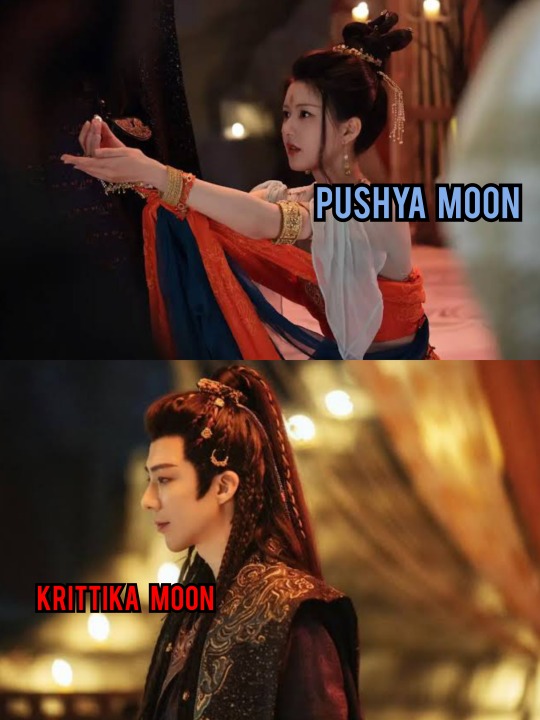
The drama is called The Story of Pearl Girl. Also through the male lead, I'm understanding Krittika better. I'm seeing Sun nakshatra natives in roles in which they're involved in trade, commerce (sometimes illegal), having the ability to find authentic minerals, strategically gathering wealth (how they're also in heist films such as Ocean's Eleven starring Sun dominant actors). And, interestingly, Saturn nakshatra natives quite literally embody the diamond in the rough, which makes me better understand their intertwining stories.

Jafar from Aladdin being voiced by Uttara Phalguni Moon Jonathan Freeman.
The metaphorical (and literal) jewel to riches in the story is the genie voiced by Pushya Sun Robin Williams.


(A film starring two Solar nakshatra natives, called Blood Diamonds.)
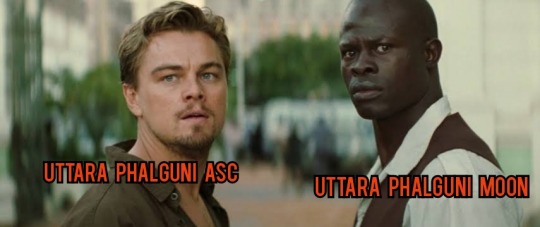
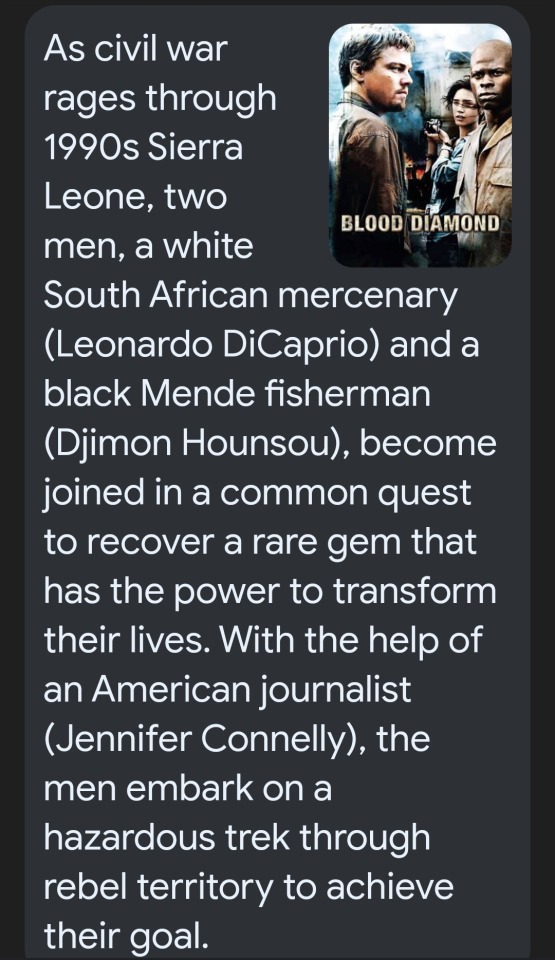
Will re-make a Sun Dominant Themes post soon based on Solar characters discovering/wanting to possess gems or being a part of some kind of big trade, it's just so interesting to me. These nakshatras are quite adventurous like that. I'll be exploring this some day soon.
In The Story of Pearl Girl, the Pushya Moon native escapes slavery in a pearl farm after enduring hardships. A powerful intelligent merchant, who is played by a Krittika Moon native, crosses paths with her as he gains possession of a particularly special pearl she tried to sell. In the story, we see how she was scrubbing floors of his ship to building her own identity (and business). The whole rising from ashes Saturnian theme.
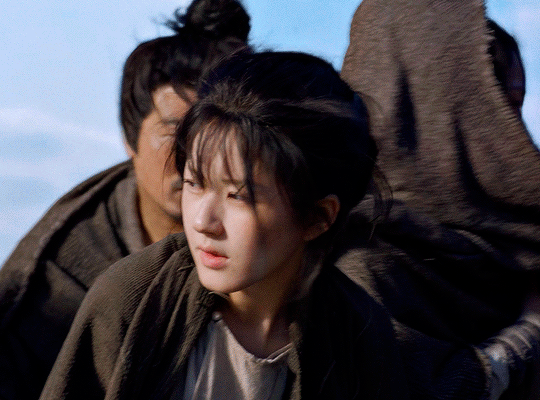
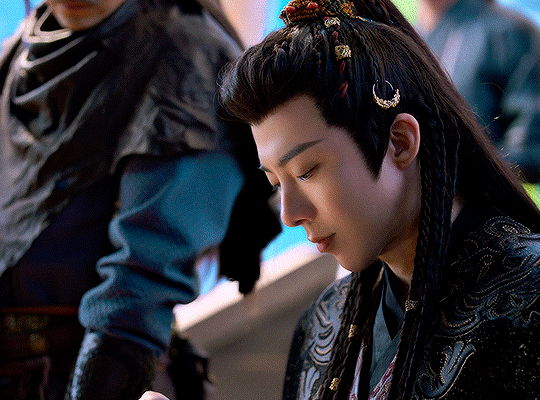
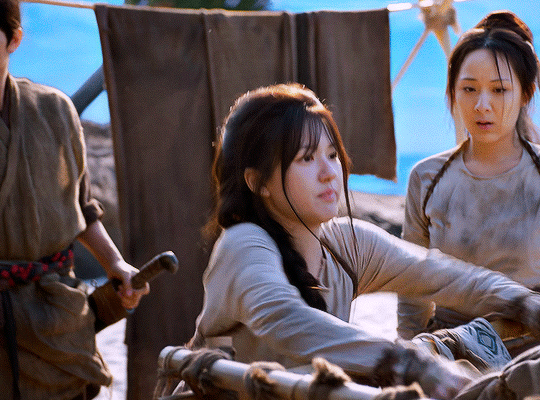
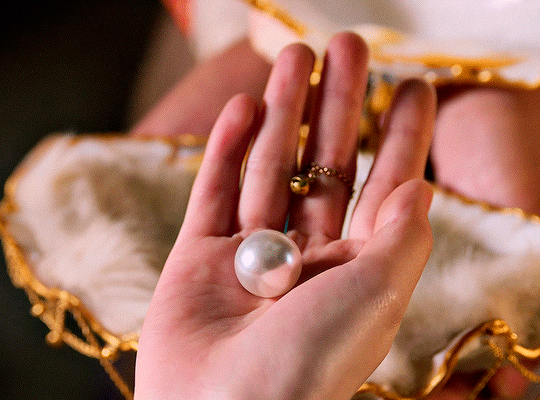
It is interesting how, because she was a pearl diver, her taught ability to search for pearls in the ocean had her compared to a mermaid.

Uttarabhadrapada is commonly known as the mermaid nakshatra but as it trines other Saturn nakshatras, such scenes had me considering the actress being a Pushya Moon. Which she honestly is. There is also a theme, though brief, with her mother who was initially cruel until her last moments. I find this particularly outstanding in Pushya nakshatra. Plus the actress is leading the story with a Solar native. Sun-Solar people stay away from each challenge: IMPOSSIBLE.
Also, seeing this theme of seeing the value in goods and minerals and treasures in Pushya nakshatra. Trining Pushya, Uttarabhadrapada's deity Ahirbudhnya lies in the deepest pits of the ocean guarding the greatest treasures in the world, too. And Pushya is the Star of Nourishment. Treasures and wealth lead to proper nourishment and comfort.
In Pirates of the Caribbean, the character Jack Sparrow is portrayed by a Pushya ASC native. Jack Sparrow is a savvy trickster pirate who has a keen sense of valuable goods and treasures. A character mirroring him is Hector Barbossa, who is portrayed by a Pushya Moon native.


Being Jack Sparrow's rival, Hector Barbossa has a great understanding of treasures and how to exploit them for his own gain.
As expected, we see Anuradha expressing itself this way as well. Such as the character Nathan Drake in the film Uncharted (2022), who is a treasure hunter and finder of legendary artifacts. Portrayed by Anuradha Moon Tom Holland.
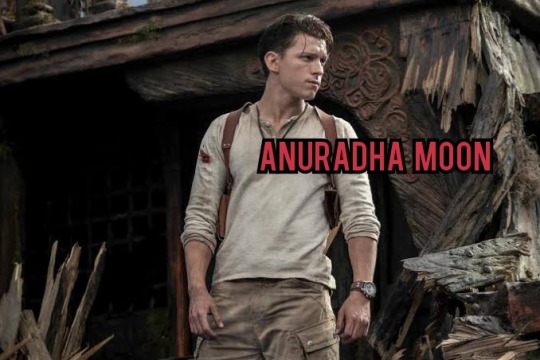
In the video game series, Nathan Drake is voiced by a likely Anuradha Moon native Nolan North.

as i said, sun nakshatras are also seen in such themes. especially krittika!!! will be exploring more medias of this sometime soon.
#vedic astrology#astrology#sidereal astrology#pushya#cancer#krittika#taurus#uttara phalguni#leo#virgo#aries#uttara ashada#capricorn#sagitarrius
105 notes
·
View notes
Text
Venus in Krittika: The Power To Separate🔪💔

Krittika, also known as "the Cutter" or "the Power to Separate," “to burn”, is a nakshatra associated with the themes of cutting, burning, and transformation. It belongs to the Rakshasa (demonic) group, which imbues it with aggressive, lustful, and sensual qualities. This nakshatra is influenced by Shukra (Venus), the guru of the Asuras (demons), enhancing its intense and passionate nature.

Krittika is split into two rashis: Aries and Taurus. When Venus is in Aries, it is considered to be debilitated. Even in Taurus, where Venus rules, the nakshatra's nature can still create challenges. This is because Krittika is a Sun nakshatra, and Sun and Venus are considered enemies in Vedic astrology. Also, the Sun exalts in Aries. The enmity between the Sun and Venus symbolizes the tension between spiritual duty and material pleasure, authority and harmony, selflessness and indulgence. While this placement is not exactly the same as having Venus combust, the overall energy and tension can feel quite similar.


The deity of Krittika Nakshatra is Agni, the lord of fire, and Kartikeya. 🔥It is an aggressive nakshatra, symbolized by a knife or razor with the intention of cutting. 🔪This is one reason why people with this nakshatra often excel as chefs or bladesmithings.
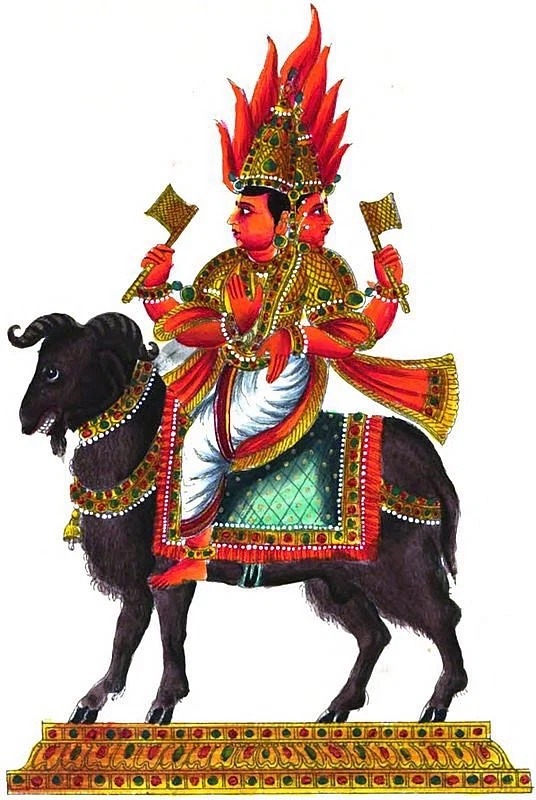
Those with Venus in Krittika are often prone to multiple relationships or marriages, as Agni had seven wives, and they may even be the cause of another couple's breakup. His Shakti is "to burn or consume in order to purify," using fire to remove impurities and reveal the truth. This is why affairs usually don't remain hidden when the third person involved has this placement. The power of fire can purify or destroy.

People with this nakshatra are driven by their sexual desires, much like Agni, who was cursed with insatiable lust after seeing the wives of the Saptarishis naked. The Moon is exalted at 3 degrees in this nakshatra, and those with dominant Moon energy often have tendencies towards infidelity, as I’ve mentioned.

Taurus is all about pleasure, and having Venus in this nakshatra can turn someone into a hedonist, driven by a desire to fulfill all their urges and obtain their absolute dreams. This can sometimes manifest in a greedy, egoistical manner.
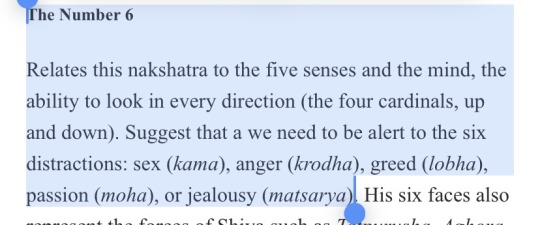
Funny enough, the yoni consort of Krittika is Pushya, another nakshatra associated with cheating due to the conflict between Brihaspati and Soma over Tara, the wife of Brihaspati. Either way, people with Venus in Krittika tend to attract married people, now if they indulge in an affair or not, depends on them.🤷🏻♀️

1. Ariana Grande has her Venus in Krittika of Aries in the 5th house, which represents short romances and flings. Ariana Grande's love life pretty much sums up her songs "break up with your girlfriend, i’m bored”; “the boy is mine”. She's currently with Ethan Slater, whom she met while they were both married.
2. Johnny Depp and Amber Heard both have their Venus in Krittika of Taurus. Allegedly, when they started their relationship, both were in other relationships at the time. Throughout their marriage, there were accusations and evidence of infidelity. The darker side of this Nakshatra manifested in their tumultuous relationship, with incidents such as Johnny threatening that he will cut himself and him painting on walls with his blood.
3. Marlon Brando had his Venus in Krittika of Taurus in his 7th H. He was famous for his numerous affairs with both men and women. Even his ex-wife Rita Moreno, admitted that he cheated frequently during their relationship.
4. Henry VIII had his Venus in Krittika of Taurus in his D9 chart. He was known for marrying six times, starting with Catherine of Aragon, who was previously married to his brother. He pursued other marriages while still married. Anne Boleyn, his second wife, was famously executed by beheading in 1536 on charges of adultery and treason. He had his Venus in Rohini (the favorite wife) in his D1.
5. Russell Crowe, another individual with Venus in Krittika of Taurus in the 5th house, began an affair with Meg Ryan whom he met on the set of "Proof of Life" while she was married at the time.
6. Partynextdoor also, has his Venus in Krittika of Taurus in his D1 chart. Themes of infidelity frequently appear in his songs, such as in his song "SAVAGE ANTHEM."

#astrology notes#vedic astro observations#vedic chart#krittika#vedic astro notes#vedic astrology#astrology#sidereal astrology
144 notes
·
View notes
Text
Lookalikes in astrology
I have seen a lot of people compare Taylor Russell and Jenna Ortega. Saying that they looked similar. They really do share similar signs & naks in their charts. In Vedic/sidereal your appearance is not determined by one placement alone, but your whole chart combination.

Taylor Russell is a Scorpio/Anuradha moon, Cancer/Pushya rising, Rohini Mars AMK, Jupiter in Swati, Purva Phalguni Venus
Jenna Ortega is a Virgo sun, Scorpio/Jyestha rising, Rohini Moon AMK, Venus in Swati, Purva Phalguni Mars AK
Jyestha and Anuradha, located both in Scorpio, are yoni consorts. Represented by the deer, which is what influences their similar doe like eyes.
Both have Sun trine moon, Asc square Sun, Rahu/Node trine Sun, Mercury-Saturn





#taylor russell#jenna ortega#vedic beauty observation#vedic beauty#vedic astrology#astrology#astro notes#nakshatras#anuradha#scorpio#astrology observations#sidereal astrology#vedic astro notes#astro observations#jyotish#niyasruledbyvenus
72 notes
·
View notes
Text
Anuradha - The Bridge To All Paths Pt.1
Services
The symbolism of Anuradha is the deer, an archway, a lotus, and a staff stick. I'll be doing a series of observations for this nakshatra that lays within 3'20 degrees to 16'40 in Scorpio. It is ruled by Saturn and its traditional ruler Mars crating a combination of a disciplined, focused, yet gentle mastermind.


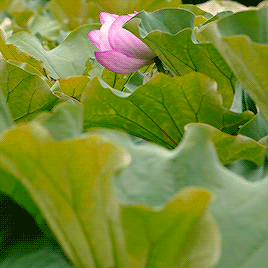
There are parts of the lotus flower that reaches down to the ground in the mud water, where it gets all its nutrients from, and it functions as a sort of plumbing system working made by nature. Anuradha native learns very early on how to alchemize and thrive in difficult environments. The other symbolism of this nakshatra is the staff, which is a mystical weapon that wields in magic powers to destroy the obstacle in front of it. There are many super hero or super villan themes within this nakshatra as well, so the magical themes are heavily present.
Anuradha is also associated to a very famous bird who didn't gain notoriety just for its sounds and songs, but its meanings. In Old English, “nightingale” translates to “night singer. It has appeared in many thousands of poems from Homer to the twentieth century, and even in ancient times it acquired an almost formulaic meaning as the bird of spring, of night, and of mourning.
Nightingales are also often associated with the concept of love, particularly romantic love. This connection can be traced back to the behavior of male nightingales during mating season. When attempting to court a female, a male nightingale will sing intricate songs throughout the night, making their presence known and winning the heart of their desired mate.
Kristin Hannah author of "The Nightingales" has her Moon in Anuradha. A critically acclaimed book for its powerful story and message of violence, love, resistance, and alliances.


We also have to recall through the story of Radha and her "impossible" love. Anuradha individuals tend to run into someone they fall deeply in love with, become devoted to them, but lose the connection and has a hard time moving on from it even after finding the "perfect" partner. This plays out the most in a man's chart, and in women they tend to be the "one that got away". Although, it could of course happen either way regardless of gender.
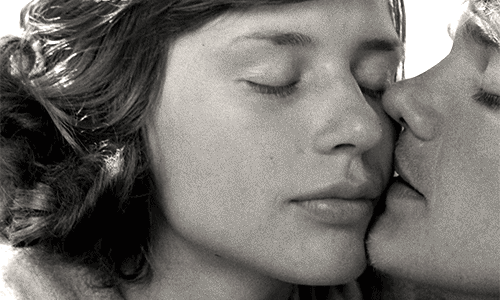
Anuradha natives might run pretty often into certain people and quickly develop a deep fixations with them, hence why they sometimes end up with a partner/spouse who is overprotective and a bit neurotic. This usually occurs when that powerful sense of devotion is placed upon someone else in a codependent way. They are also the ones who want to listen and resolve problems of others because they feel to a core level that the entire world is their friend.

It is normal for these natives to lose friends and connections along their way, but at the end their close circle and alliances become essential to their development. Saturn ruling this nakshatra gives it enough seriousness and discipline to understand that quality is truly more important than quantity, so having small networking groups is also common.
They seek those who lay behind the shadows and can see the bigger picture, hence why they are often the left hand of Jyestha natives who play the role of the one who obtains it all by sacrificing it all, but at some point one or the other develops an unhealthy attachment that leads to a major karmic point for both.
Their attraction is almost fated because they are yoni consorts after all. If they are able to mutually filtrate all their darkness, they can become a power couple.
It is quite common to see super heroes who rely on a group in order to fight against chaos have Anuradha placements. There is a strong desire to unite above all and bring fruits later on within this nakshatra.

In general, the lighter side of this nakshatra are beautiful, worth knowing, and exploring as well. It tells us the importance of learning to control our own shadow who wishes to use alliances for self gain, and rather use it allow others to connect the collective harmoniously.
In the next part of this nakshatra I will exploring the darker aspects. Continue to Part 2!
#astrology#astro community#astro observations#astro placements#astro notes#astrology lessons#astroblr#sidereal chart#sidereal#sidereal astrology#sidereal zodiac#vedic#vedic astrology#vedic astro notes#vedic astro observations#anuradha#jyestha#scorpio ascendant#scorpio sun#scorpio moon#nakshatras#nakshatra#astrology readings#astrology signs#birth chart
121 notes
·
View notes
Text
Vedic astrology observations
1. I've noticed that many real life events coincide with one's natal chart. For example, if you have Venus in Swati, you could be attracted to someone with Swati big 3 (or it's yoni consort, Hasta) or you could potentially meet a partner when the Moon is in Swati or during transits over your Venus.
2. i think some people have a belief that finding someone whose moon nakshatra is your moon nakshatra's yoni consort is some sort of sign of a soulmate connection but that's not necessarily the case. it does create interesting chemistry but it's not the ultimate benchmark by any means.
3. if you want to learn more about your nakshatras please study it's mythology. i think that's the best starting point. too many people obsess over their divisional charts and what not. all of that comes later. start with the story.
4. venusians attracting other venusians is soo real. venus truly creates exclusivity & a kind of elitism. invented high standards period.
5. elephant yoni people are the biggest freaks for real. never met a bharani or a revati who wasn't completely freaky and sexual.
6. rahu girls may have hypnotic eyes but have you seen the eyes on a girl with serpent yoni? BEWITCHING
7. sidereal geminis embody duality like nobody else. the hardest people to figure out. involved yet detached. sexual yet frigid. close yet distant.
8. ardras are those cancers that are way too realistic and thus prone to pessimism meanwhile punarvasus are the delusional yet happy ones.
9. the larger the yoni animal, the more confident and naturally at ease an individual is. similar to how things are in nature, smaller animals constantly live in fear of attack. every rat yoni person i know has anxiety. meanwhile the lion yoni/elephant yoni person i know has balls made of steel
#sidereal astrology#vedic astro notes#vedic astrology#astro observations#astro notes#astrology notes#astrology observations#nakshatras
438 notes
·
View notes
Text
Purva Ashada & Elephant yoni consorts


Zoë Lund - Revati ☽ Purva Ashada ↑


Bianca Jagger -Bharani ☉ Purva Ashada ☽
29 notes
·
View notes